
Knowledge Hub
In recent years, we’ve noticed an increasing number of articles and discussions about the “least-educated” countries or countries with the “worst” education. But those phrases don’t tell the whole story.
We get it: It’s easiest to simplify these subjects for search engines and quick-scroll reading. But the problems facing education today are far from simple, and they have very real effects on hundreds of millions of children around the world. That includes the 250 million children who won’t be returning to the classroom this autumn, as well as countless more who are in school but not receiving a quality education. Often there are major discrepancies even within countries based on urban and rural areas, and within communities based on gender and family income. Further complicating matters, not every country has complete data on education for each year — and it’s often the countries with education systems compromised by conflict or instability that are the least reported.
So how do we measure “best” and “worst” educations? By the number of students enrolled in school? The number of students who complete school? Literacy rates? To get a true sense of a complex issue, we’ve turned to the United Nations’ 2024 Human Development Index. This annual report includes an inequality-adjusted education index, which is calculated by averaging the expected years of schooling in each country with the mean years of schooling. The UN now adjusts these figures to account for inequalities along gender, income, and geographic lines to get a truer understanding of education in each country.
We’re using these figures to look at the 15 countries where it’s hardest to get an education, while also including more data from UNESCO, the World Bank, and other organisations to get a better sense of context — and of what needs to change.
15. Central African Republic
According to the World Bank, the adult literacy rate in the conflict-torn Central African Republic was just 37% in 2020. Per UNESCO, as of 2019, only 27% of students completed their primary education, a figure that dropped significantly for lower-secondary education (12%) and upper-secondary education (5.5%). The Central African government, however, has been working to address this. In 2023, it allocated nearly 10% of its total budget to education, and in 2022 it allocated nearly 11% — the two highest expenditures on education in the last decade.
» Learn more about Concern’s work in Central African Republic

14. The Gambia
Data from UNICEF suggest that only 13% of children in The Gambia have fundamental reading skills, with a large discrepancy between urban and rural students (16% for urban students and just 7% for rural). A similar gap exists in numeracy, with 5% of urban students meeting the standard and just 1% of rural students doing the same (making for a national weighted average of 4%).
13. Sudan
The UN’s latest education index data was collected before conflict in Sudan escalated into a national crisis. The country had made significant improvements to basic education between 2008 and 2018, expanding access for an additional 1 million students and increasing retention from primary to secondary school by 33%. However, political instability that began in 2019, combined with the effects of the pandemic and the civil conflict that erupted in 2023, has upset some of that progress. Since April 2023, an estimated 19 million children have lost out on a formal education and over 90% of the country’s schools have either been closed, destroyed, or made inaccessible. In October 2023, UNICEF’s Mandeep O’Brien warned: “Sudan is on the brink of becoming home to the worst education crisis in the world.”
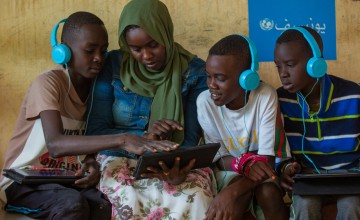
12. South Sudan
With high rates of malnutrition, displacement, and violence, South Sudan is one of the worst countries to be a child. On average, children in South Sudan are expected to receive just under five years of schooling according to UNESCO. However, given what UNESCO refers to as “learning-adjusted years of schooling” (an average of the years expected to complete and the average test scores of a student, giving a sense of “true” education), students in South Sudan likely only receive two and a half years of actual education. Part of this owes to qualified teacher shortages in the country, with only 44% of the country’s teachers trained in quality education as of 2011.
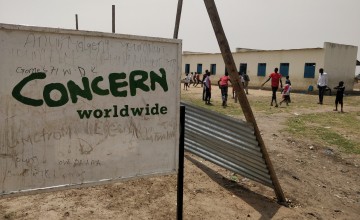
11. Ethiopia
Before the pandemic and localised conflict, Ethiopia had made considerable strides towards educational access for its youth. However, World Bank data show a 25% drop in primary school enrollment between 2020 and 2022. In fact, 2022’s enrollment rates were the lowest since 2006. While the completion rates for primary school were still high in 2021 (65% female and 69% male), these rates dropped significantly for secondary and university education: Only 29% of women completed secondary education, and just 13% completed tertiary education. For men, those figures were 30% and 8%, respectively.
Regional conflict has also had a serious impact on education for students in areas affected by violence.
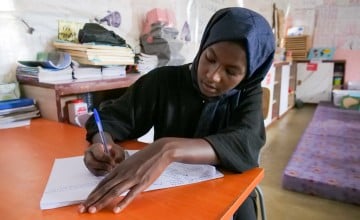
10. Afghanistan
UNESCO’s records for Afghanistan give us data from 2015 and 2022, which is a useful comparison given shifts within the country over those seven years. Unfortunately, many figures around enrollment and completion have gone down in that time. Primary education completion rates in 2022 were down over 10 percentage points compared to 2015.
Afghan girls and women face an especially uncertain future, with UNESCO suggesting that at least 1.4 million girls have been excluded from secondary education since 2021. (Since 2022, women have also been banned from universities.) However, some of the biggest drops in this timeframe were for boys, who went from an overall 69% completion rate in 2015 to 53% in 2022 (in rural areas, this difference was even starker, with rates at 65% and 45%, respectively). Students from low-income families also suffered major setbacks, going from an average 44% completion rate in 2015 to just 19% in 2022.
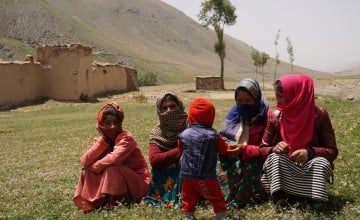
9. Sierra Leone
Sierra Leone is still feeling the effects of a brutal civil war (1991-2002) as well as the world’s largest Ebola outbreak, which centred on the country between 2014 and 2016. Today, UNESCO reports an almost even percentage of boys and girls who complete primary school in Sierra Leone (63% and 65%, respectively). However, the gender disparity becomes more pronounced in secondary school, particularly upper-secondary levels where girls are 50% less likely to complete their education compared to boys. One joint study between UNICEF and UNESCO suggests that one of the main issues is that pregnancy and child marriage often lead to girls dropping out of school early or underperforming on national exams.
The Sierra Leonean government has significantly increased its investment in education over the last decade. Before the Ebola outbreak, more than 15% of its federal budget was earmarked for education. Since coming out of the epidemic, it has invested between 29% and 35% of its annual budget in education. Concern has also worked with the Ministry of Education on the Safe Learning Model, a pioneering, multi-million euro, five-year programme funded by Irish Aid designed to address school-related gender-based violence. We also recently concluded a five-year project, Every Adolescent Girl Empowered and Resilient (EAGER), which worked with girls ages 13 to 19 who either never attended school or had dropped out in order to build literacy, numeracy, financial, and other life skills, along with small businesses.

8. Djibouti
Over the last decade, Djibouti has improved enrollment rate for primary education (from 55% in 2012 to 64% in 2022). However, while the overall completion rate for primary education was 81% in 2017, there were large discrepancies in this figure when region was brought into account; girls in rural areas of the country, for example, were only 42% likely to complete primary school.
7. Senegal
While student enrollment in Senegal is relatively high compared to other countries on this list, the World Bank points to a key issue around the learning-adjusted years of schooling: Although children can expect to complete an average 7.3 years of school, that number of years drops down to 4.8 when you factor in what they actually learn in those 7.3 years. They also score below average on standardised tests at an international level.
6. Guinea
Education for girls in Guinea is especially difficult, according to UNESCO. Primary school completion rates for the country were 56% for girls and 70% for boys in 2021. A similar gap existed in secondary school completion, with only 31% of girls enrolling compared to 41% of boys. (It’s only at the university level that we see this shift, with 9% women enrolled in 2021 compared to 4% men.)
5. Chad
Fewer than 34% of students in Chad are expected to complete primary school as of 2023. Looking at more complete data from 2019, we can also see an equality gap between genders and locations. Children in urban areas, for example, were more than 55% likely to complete primary education, compared to children in rural areas who were just 19% likely to complete.
Completion rates also dropped significantly between primary and secondary education in 2019, with only 13% of Chadians expected to complete lower-secondary school and 4.5% expected to complete upper-secondary school. These become fractions of percentages when factored out by gender, income, and geography (less than 0.2% of girls from the lowest-income rural families completed their secondary education in full).
Concern has worked in Chad for nearly two decades with programmes that touch on this key area of need. Last year, we worked with nearly 3,400 students and community members through programmes aimed at increasing access to education, improving its quality, and supporting the wellbeing of children and teachers.
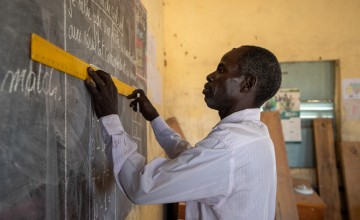
4. Yemen
Recent figures from UNICEF show that school-aged children represent 33% of the Yemeni population. Nearly a decade of conflict has created what the UN calls an “education crisis” in the country, with 4.5 million children out of school in 2023. That represents about one out of every three children. Additionally, over 2,400 schools have either been damaged or closed due to the crisis.
Even before the onset of conflict in 2015, however, education was an issue in Yemen. In 2013, UNESCO reported an overall primary school completion rate of 62%, with less than half of those students completing their secondary education. There were also considerable gaps in completion rates between children in low-income and high-income communities, and between rural and urban students.

3. Burkina Faso
An ongoing crisis in Burkina Faso has contributed to an education loss for a country where 43% of the population is aged 14 or younger. A World Bank brief suggests that 74% of all Burkinabè in the final years of primary school are not proficient in reading, and that 67% have not achieved the minimum proficiency level in literacy. That’s to say nothing of the 21% of primary school-aged children who are not enrolled at all, in many cases due to security concerns and over 6,100 schools reported closed as of last year.
In recent years, we’ve seen some gains in education, with UNESCO reporting that the completion rate for upper-secondary education in rural areas of the country more than doubled between 2017 and 2021. However, overall completion rates for primary, lower-secondary, and upper-secondary education have all dropped in recent years and we continue to see a wide gap between educational opportunities in urban versus rural areas, and between families with higher and lower incomes.

2. Niger
The same pattern of instability and conflict in the Sahel affecting Burkina Faso can also be seen in Niger (and in Mali, below). Last year, the UN High Commissioner for Refugees (UNHCR) reported that four years of heightened insecurity in the region had nearly doubled the number of school closures, resulting in over 13,200 schools closed across eight countries in central and west Africa. This included approximately 940 schools in Niger as of late last year, affecting over 74,000 students and nearly 1,800 teachers.
Education has been a priority for the Nigerien government and in recent years, before regional violence and political instability escalated, there had been several successes in enrollment and educational outcomes. Between 2014 and 2019, minimum proficiency levels for primary school students increased from 2% to over 14% for literacy, and from 28% to 67% in numeracy. However, the needs remain high, especially for children who have either been displaced or continue to live in volatile areas.
Concern’s education programme in Niger covers over 250 schools and supports over 80,000 children, with a focus on preserving the right to education in situations of armed conflict. We work to build school infrastructure and strengthen teacher skills. We also work with communities to create a safe learning environment by setting up bridge classes, listening clubs, mobile libraries, and distance coaching.

1. Mali
Since 2010, completion rates for primary school in Mali have increased from 38% to 56.5%, marking significant gains even as conflict began to affect the country (and the wider Sahel region) beginning in 2012. Needs remain high amid protracted conflict, however, with the Norwegian Refugee Council reporting over half a million Malian children affected by related school closures and struggling to keep up with school amid the trauma of war. The World Bank records that 91% of children enrolled in primary school in the country are not proficient in reading, and 87% do not meet the minimum standard levels of proficiency. These numbers are adjusted for the children currently in school, but overlooks the 33% of school-aged children in Mali who are not enrolled at all.
Note: Some countries were not fully accounted for on the UN’s latest HDI, particularly with regards to the inequality-adjusted education index. These countries include Lebanon, Somalia, and Syria.
Concern’s work in education
Concern’s work is grounded in the belief that all children have a right to a quality education. We integrate our education programmes into both our development and emergency work to give children living in extreme poverty more opportunities in life and supporting their overall wellbeing. Our focus is on improving access to education, improving the quality of teaching and learning, and fostering safe learning environments
We've brought quality education to villages that are off the grid, engaged local community leaders to find solutions to keep girls in school, and provided mentorship and training for teachers. Last year alone, we reached 1.1 million people with education programmes across 10 countries.




